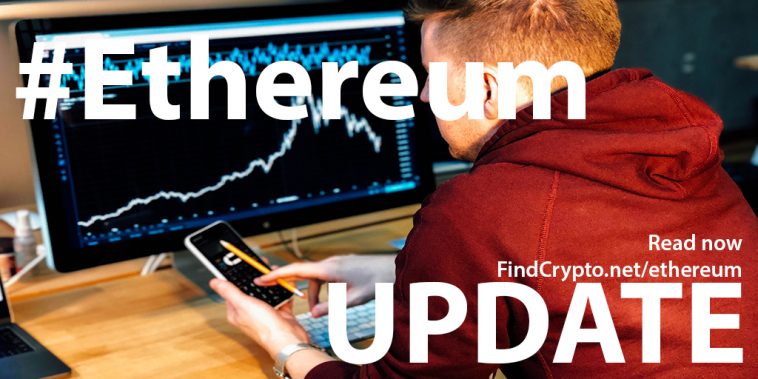Ethereum update: What even is issuance / inflation?
That seems to be the question a whole lot of you really need to be asking because my god the comments I’ve read these last couple days are absolutely pathetic. Rather than just call people stupid and move on with my day, I figured I’d try to actually shed some light on this issue.
Got a problem with my attitude? Cool, I don’t care. Direct your negative energy towards finding where I’m actually incorrect.
—
# Why do we even have inflation?
Currently, we need to generate new Ether (aka inflate the total supply of Ether) in order to pay those who run the network. Since we are still using a Proof of Work consensus algorithm, this means we need to pay miners who are assembling and mining blocks as well as propagating transactions.
# Okay, we need to pay miners. Why can’t we pay them more/less Ether than we do now?
Miners have very real costs. Electricity, hardware, maintenance, etc., and I don’t think it’s particularly huge assumption to say that these costs have to be paid for (mostly) in fiat currency.
Side note: even if miners *are* paying some of their costs with Ether, I assure you that the amount of Ether is not fixed (like 1 ETH / kWh). Rather, there is a fiat-based cost, and the miner is simply paying the equivalent fiat amount of Ether at [spot price](https://investinganswers.com/financial-dictionary/stock-market/spot-price-2007). This invalidates any argument that miners are “always paid the same” even though they will make a somewhat fixed rate of Ether.
Since the price of Ether is constantly changing, the amount of Ether miners need to pay their bills also changes. If the price of Ether is too low for some miners to be profitable, it is assumed that they will stop mining or go to another coin. This decreases the overall difficulty, making it easier for the remaining miners to win blocks, making them more profitable. It is a balancing act in which *we will never have zero miners* because at some point it will always be profitable as long as Ether isn’t worth exactly $0.
# So if the price of Ether is always changing, doesn’t that mean the inflation is too?
No. It means that the market cap of the network is constantly changing, but issuance doesn’t have anything to do with fiat value.
The [issuance rate] of Ether is currently about 20k-21k ETH daily from block rewards, uncle rewards, and uncle inclusions. It’s not super important if you understand uncles, just know that they exist and miner make a bit of Ether for including them in addition to regular blocks.
This issuance rate is ~0.0019% daily, or ~7% annually. Compare this to the current Bitcoin issuance rate of 4.25% annually.
The fact that Bitcoin is an order of magnitude more valuable (in terms of fiat) means that their network is actually paying much, much more. However, the rate that BTC is being *diluted* is less than Ethereum.
Another side note: the famed Bitcoin hard cap that some people love to point at as the holy grail of inflation models won’t be reached until 2140. I honestly doubt Bitcoin will exist in 100 years. Think about a single technology that has lasted more than 10 years… To add to this, Ethereum is not going to be PoW forever. The change to full PoS will also bring with it a change to the issuance model, and the rough estimates of necessary inflation rates in full PoS are only 1-2%. When you account for lost/locked Ether, effective inflation could literally be negative.
# Doesn’t just knowing the inflation model make Bitcoin more valuable?
Yes and no. Having a stable inflation model *does* make the platform more predictable, which I would argue is a valuable thing. However, there is absolutely zero evidence that having a permanent inflation model actually contributes to better coin prices. There are way bigger, way more impactful influences on price than the inflation model. Frankly, the market is irrational IMO. Technological prowess, innovation, etc. just don’t correlate to price.
It seems silly, but I guess I should reiterate that *the inflation model is fixed*. That doesn’t mean it will never change, but we do have a constant block reward that does not change according to the fiat value of Ether or anything like that. *We do know the inflation rate, there is no ambiguity*.
# Why can’t we just lower inflation then?
Lowering the inflation rate does not mean the total amount of fiat being “generated” decreases. Price changes make a much larger difference in that, and that is uncontrollable.
The biggest issue with reducing inflation though is that it will hurt miners. Some people will say that we can reduce issuance rate along with doing things like delaying the difficulty bomb, but there is no reason to expect that this will translate to an increase in price that makes up for the loss of revenue for miners.
This goes both ways though. Increasing the issuance rate *also* doesn’t mean that more miners will be more profitable, it’s completely dependent on the price of Ether.
# Okay okay, I get it. Changing the issuance rate doesn’t mean miners will actually be paid more / less, but doesn’t that mean we should decrease issuance anyway?
You need a certain amount of fiat to be generated by running the network in order to secure the network from attack. If there just isn’t enough money being generated, then you risk 51% attack as miners decide to mine more profitable coins.
This number is somewhat unknown, but it’s also not a completely impossible number to guess. This number is also *purely* fiat in value, not ETH or BTC.
Lets say it costs $1 billion to secure a network. That means you need an annual issuance rate that will be > $1 Billion, but the only way to determine a rate that gets you there is to assume some average value of the coin itself. This is not possible. Period.
This means that we will often be overpaying for security because it’s literally impossible to always be paying the minimum amount unless the price is stagnant. The current issuance rate seems to be working, but it may be far too high some days, and too low others. We really won’t know for sure until the network is 51% attacked that it is too low, so it’s much better to keep it “reasonably high” until full PoS is here.
—
I really hope this is somewhat insightful. There’s a whole lot more to say about this topic, but I think this is a decent start to those discussions and it’s already too long for most people to fully read anyway but fuck it.
About Ethereum
Ethereum is a decentralized platform that runs smart contracts: applications that run exactly as programmed without any possibility of downtime, censorship, fraud or third-party interference.
Author: AtLeastSignificant
Score: 4
Don’t forget to share the post if you love it !




